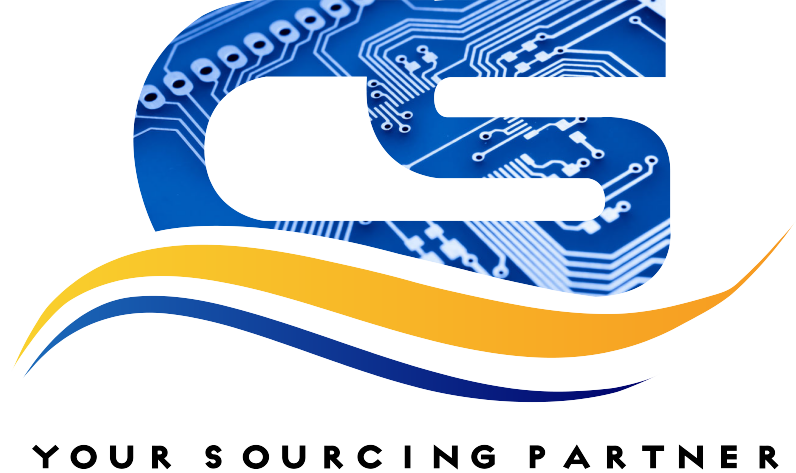In the fast-paced world of electronics manufacturing, reliability is paramount. Whether you’re building a cutting-edge smartphone, a sophisticated medical device, or a high-performance automotive system, the quality of electronic components can make or break your product. To meet the stringent demands of today’s market, electronic components distributors play a crucial role in sourcing reliable products. In this blog, we at CS Electronics and Technology will explore the methods and considerations that distributors employ to ensure that the components they provide meet the highest standards of quality.
1. Establishing Relationships with Trusted Suppliers
The foundation of a reliable supply chain starts with the relationships electronic components distributors build with trusted suppliers. Vendors that have a track record of producing high-quality components are often the go-to sources for distributors. These relationships are nurtured through years of cooperation and are characterized by mutual trust.
When distributors have long-term partnerships with suppliers, they gain insight into the supplier’s manufacturing processes, quality control measures, and the reliability of their components. They can also collaborate on product improvements, ensuring the components meet the specific requirements of their customers. This familiarity and trust between distributors and suppliers are instrumental in sourcing reliable electronic components.
2. Rigorous Supplier Audits and Quality Control
To ensure quality, distributors conduct rigorous supplier audits and quality control checks. These audits involve a comprehensive evaluation of a supplier’s manufacturing facilities, quality control procedures, and adherence to industry standards. By assessing the supplier’s capabilities, distributors can make informed decisions about whether to source components from them.
Additionally, ongoing quality control is essential to guarantee that the components meet the required specifications. Distributors often implement their own quality control measures to verify the reliability of the products they receive from suppliers. This includes inspection, testing, and validation of components to ensure they conform to industry standards and customer requirements.
3. Compliance with Industry Standards
Electronic components must meet specific industry standards to be considered reliable. Distributors ensure that the products they source comply with these standards. These standards are in place to protect both the environment and the end-users of electronic products.
By verifying compliance with industry standards, distributors not only ensure the reliability of the components but also prevent potential legal and environmental issues for their customers. It’s a testament to their commitment to delivering safe and dependable components.
4. Counterfeit Detection and Mitigation
The electronics industry faces a significant challenge in the form of counterfeit components. Counterfeit electronic components can wreak havoc on the reliability of a product, potentially causing catastrophic failures. Distributors invest in advanced technologies and employ experts in counterfeit detection to ensure that the products they provide are genuine.
Methods for counterfeit detection include advanced visual inspections, x-ray scans, and chemical analysis of components. Distributors often work closely with customers to educate them about the risks of counterfeits and implement strategies for mitigation, such as secure supply chain management and traceability.
5. Inventory Management and Traceability
Inventory management and traceability are essential aspects of sourcing reliable electronic components. Distributors implement advanced systems to keep track of their inventory and ensure that components are stored and handled properly. This includes monitoring factors such as temperature, humidity, and handling conditions to prevent damage to the components.
Traceability is critical for identifying the origin of a component and tracking its journey through the supply chain. In the event of a recall or quality issue, traceability allows for quick identification and resolution of the problem. This level of transparency is a hallmark of reliable sourcing.
6. Customer-Centric Approach
Finally, electronic components distributors take a customer-centric approach to sourcing reliable products. They collaborate extensively with their clients to fully grasp their unique demands and specifications. This includes providing technical support, offering product recommendations, and helping customers navigate the complex world of electronic components.
By aligning their sourcing efforts with customer expectations, distributors can ensure that the components they provide not only meet industry standards but also align with the unique demands of their customers’ applications.
In the world of electronics manufacturing, quality and reliability are non-negotiable. Electronic components distributors play a pivotal role in ensuring that the components they provide meet the highest standards. Through trusted supplier relationships, rigorous quality control, compliance with industry standards, counterfeit detection, inventory management, traceability, and a customer-centric approach, these distributors are the guardians of reliability in the electronics supply chain. So, when you hold that smartphone in your hand, or rely on a medical device, you can trust that electronic components distributors have done their part to ensure the products are as reliable as they come. Considering the best electronic component suppliers for your business? Think CS Electronics and Technology


